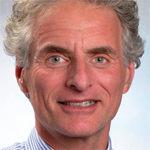She points to the example of one place where outmoded techniques were still being used to screen for osteoporosis. After working in the community, the local doctors are doing a better job of screening their patients before referral.
Bringing Local Changes
Dr. Goldberg agrees, noting it was not unusual to have people come to him with prescriptions for methotrexate or other medications for diseases that did not require them. Basically, the doctor saw everything as rheumatoid arthritis and was treating patients accordingly.

In the PSN model, the physicians work with the hospitals to increase services that are available locally. This helps add fee-generating offerings to the facility while also improving patient care. “We partner with our hospitals so that a patient is able to just go down the street instead of driving three hours for their infusion therapy,” says Dr. Jackson. “The hospitals have been able to expand use of laboratory, X-ray, and other services that would have otherwise gone somewhere else. Patient compliance with treatment has improved as the therapies become available much closer to home.”
Challenges Seen
Rural areas can provide challenges not seen in urban settings. From the type of patient to the availability of modern equipment, there is a wide variation even between hospitals seen by the circuit-riding physicians. “Our patients are hard working and often can’t or won’t slow down,” says Dr. Goldberg. “In some areas, it is ‘give me disability or give me death.’ Here we have to beg people to not work as hard and give their joints a chance to heal.”
There are differences in what is available in the way of diagnostic modalities. Some places may not have a polarizing microscope or some kinds of X-ray imaging.
“Even without some of the bells and whistles, a lot of the rheumatologists’ work can be done without the technology,” noted Dr. Goldberg. “The history and physical is a lot like the MRI, but cheaper. You can still have a positive impact.”
Going to multiple hospitals results in some problems not seen in urban settings. One example is the need to master multiple electronic health record (EHR) systems. There may be variations in the equipment available as a physician goes from one place to the next.
“I had to learn five different EHR systems,” says Dr. Jackson. “It was a challenge to figure out how to use, and become efficient in, each one. The upside is that I now have a good idea of what does and does not work.”

